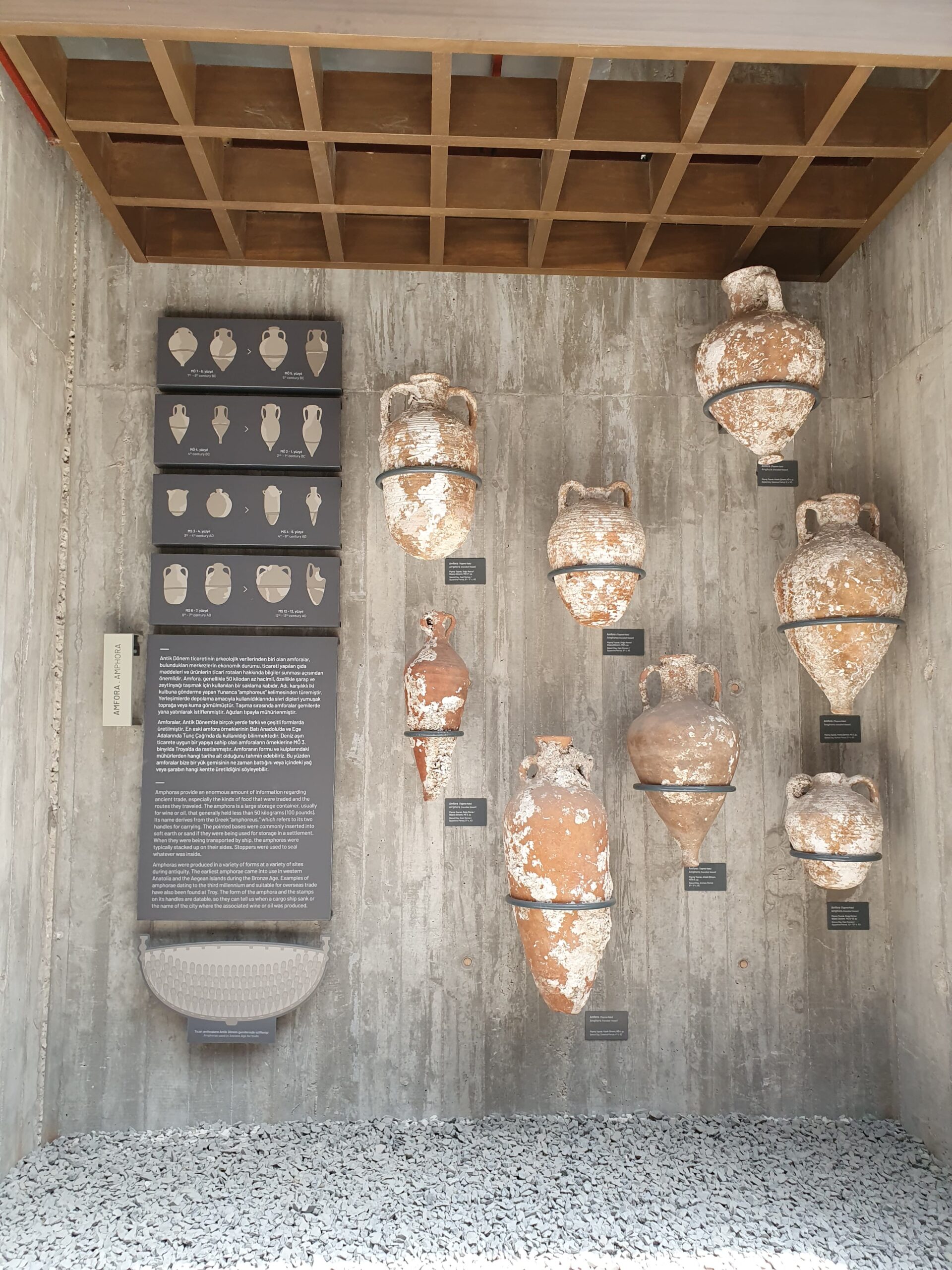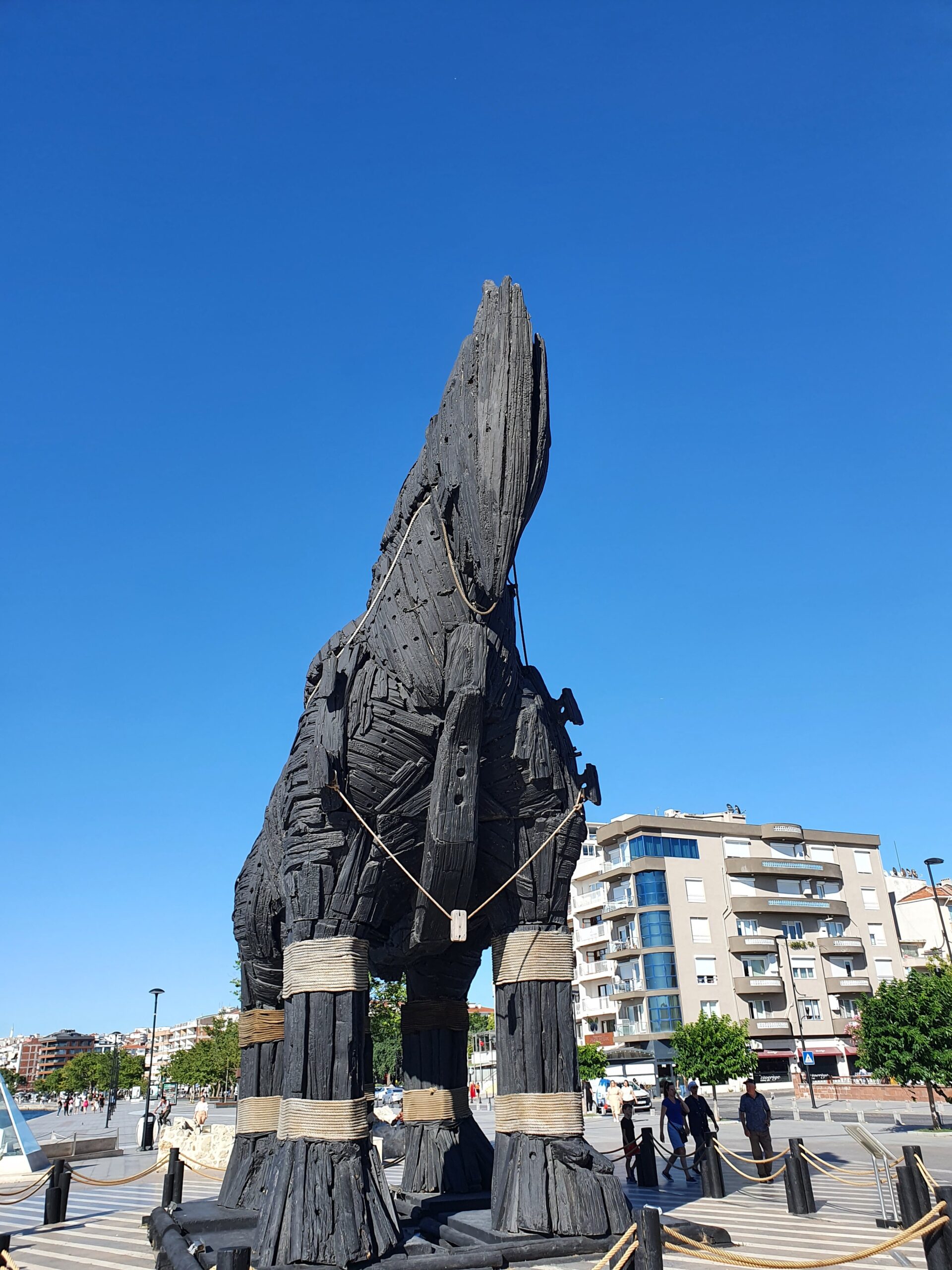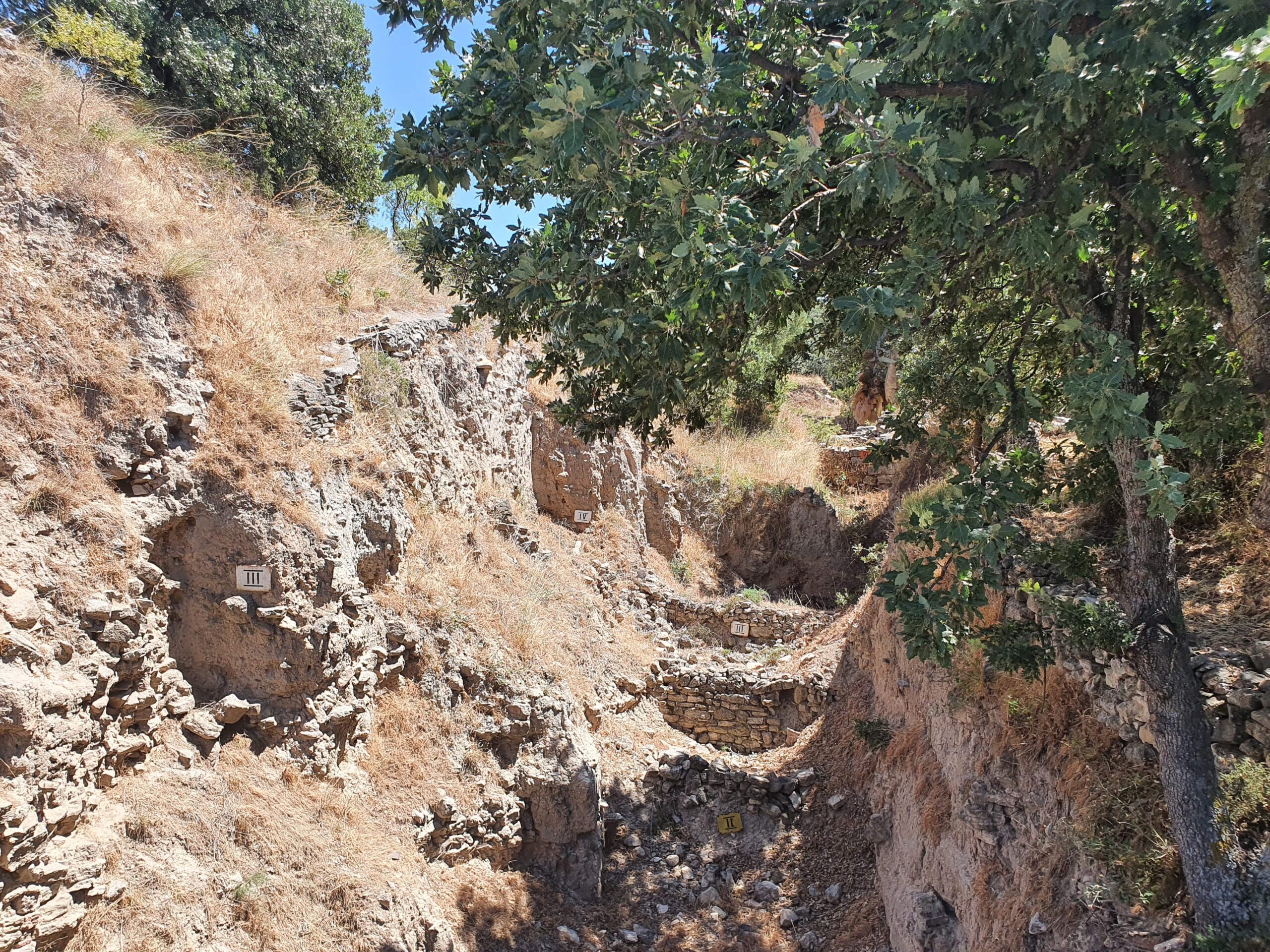Troy- Museum and Archeological Site
Introduction
Road trip goes on… Fantastic Canakkale, what else will you serve us today? After relaxing Gokceada vacation, Canakkale center– full of history, the epic war of bloody WWI at Gallipoli peninsula, heading towards Bozcaada for two days but first we are now back to BC on the road… We should be checking out Troy now and we are very excited. We will start with the Museum of Troy and then see the archeological site and excavations.
A side but important note…Troy archeological site is listed in UNESCO World Heritage.
Where is Troy?
It is close to Tevfikiye.
Story of Troy [1]
What Homer Wrote
The story very much depends on what Homer wrote. The Iliad and the Odyssey- two epic poems are probably the best sources. There are many questions still trying to be answered about how Homer is connected to Troy (especially considering the period Homer lived, which layer of Troy has seen this probable epic war, and of course, the most popular questions- is there a place really exist and is this the actual site where the Trojans lived?)
We will share this information during the excavations and antique city sections. But it is better to start with the possible war between the Greeks and Troy. You know Troy got more popularity after the movie. It was a surprise to see how the war started with Helen’s and Paris’ love. And, nobody can forget the epic scene between Hector and Achilles (and of course great performances by Brad Pitt and Eric Bana).
War and Troy
The relationships in myth are a bit complicated here. But if we directly focus on the war itself, the war was between Achaeans (Greeks) and the city of Troy after Paris took Helen from her husband Menelaus who was the king of Sparta. There are still open questions about the war but it is believed that it is dating back to Troy VII around the 12th or 11th century (around 500 years before Homer was born). Menelaus called Agamemnon (his brother) who is the king of Mycenae) and they sailed to Troy with a huge army.
Another question here is “If the currently known location of Troy is far away from the sea, how Troy can be named a coast town or city”. This question is generally answered by the archeologist that the river passing thru this area carried sand and during the centuries the distance between the site and coast was increased. There were so many sea shells found in this area answering this question roughly.
If we go back to business, this war was around 10 years according to Homer and it was impossible to pass the high-standing walls of Troy. As the movie also explains, Odysseus made a plan and the Greeks constructed a wooden horse with soldiers loaded. And, the Trojans thought that this was a present to Athena and this basic but smart move started the fall of the city. The army was hidden behind Tenedos (Bozcaada now) and waited for the horse plan to work first.
In Canakkale Center, you have a chance to check the horse used in the movie and there is another horse that is a little bit primitive in the archeological site.
Excavations [2]
Excavations in the area have been still ongoing for 150 years and Hisarlik (this area, means fortress in English) was identified as the location of the city of Troy almost 200 years ago.
John Brunton (British civil engineer) was the first one to excavate the site. Subsequently, Frank Calvert made extensive surveys. Later on, Heinrich Schliemann (a German businessman) had permission from Frank Calvert and Ottomans to search the area more. He worked for around 20 years partially and found many objects (e.g. famous king Priam’s treasure, unfortunately, transferred to Europe first and moved to Russia during WWII). As the researchers explain today that his research also removed significant features from the layers. He told that Troy II corresponds to the city of legend.
Wilhelm Dörpfeld began working on the site and made the connection with Homeric Troy. Previous studies had a gap over the centuries (as Schliemann focused mainly on Troy II).
In the following decades, Carl Blegen (professor at Cincinnati University, he also had a house called Blegen House in the area) worked on the area. He showed that there are at least nine cities exist.
In the 1980s to 2000s, a team was gathered under the direction of Korfmann also including excavation along the coast. They explored bronze arrowheads, fire-buried humans dating back to 12th BC.
The research is still ongoing by Canakkale Onsekiz Mart University.
The Museum of Troy
The Museum of Troy was opened in 2018 and has the European Museum Academy Special and European Museum of the Year Special Appreciation Award for 2020.
We are curious about the layers of Troy and trying to understand the map directly. It is very interesting to see all these layers (due to the wars, fires, earthquakes, etc.).
The museum welcomes visitors with some capitals and amphoras (dating back to the BC 7th century).

Ground Floor
The museum is arranged in a sequence. It starts with Troad. Troad is a historical region around Troy and the region has the Biga peninsula- Mount Ida-Canakkale strait (and even Imbros and Tenedos). The archeological studies consist of Troy, Alexandria Troas, Assos, Parium, Mydos, Smitheion, Ugurlu Gokceada Zeytinlik, and Yenibademli Gokceada.
There are interesting pieces from all these regions.
- Ugurlu Zeytinlik settlement in Imbros (Gokceada) is thought that it is the first settlement on the Aegean islands. Excavations revealed axes, tools, and bones dating back to BC 6000.
- Near Gulpinar, there was a site dating back to BC 5000. Gulpinar- Smintheion excavations revealed that the site had worked on fishing, animal husbandry, and milk products (e.g. cheese pots).
- Parion is considered a fishing site at the beginning, but, the population increased later on. There were two pots at the site and excavations revealed pieces such as pots, perfume vessels, amphoras, mugs, and more on.
- There are some arrowheads shown in a section from Troy VI and VII.
- One of the glorious sections on the ground floor is definitely Trojan Treasures. There are diadems, earrings, etc., and you will probably feel the question “is the human really progressed over the centuries?”. Whoever made these pieces are the real artists.
- Dedetepe Tumulus dating back to BC 5th century located near Cesmealti has an animation of what a burial chamber looks like.
- The essential section of this kind of museum is coins, surely. You will observe different coins from different years in Troad.


1st Floor [2,4]
Layers of Troy welcomes visitors on the 1st floor. The dedicated floor talks about all aspects of this fantastic region. The region here had been used for almost 4000 years. There are different layers raising up to 15 meters in height. It was a village-type settlement at the beginning but developed later and has seen wars, earthquakes, different empires, and more on.
Troy I to VII constitutes more than 50 building phases. Over Troy VII, ancient Greek- Troy VIII and Roman – Troy IX are observed.

Layers of Troy
The addition of Layer 0 is a bit interesting and we may have more information in the near future.
Layer 0 or Troy 0 (BC 3500): Per recent studies, a new layer is found that took Troy’s history back 600 years based on traces of burns, pottery, and wooden beams. [3]
Before BC
Troy I or Layer I (BC 3000-2550): It was a village-type settlement and Troy I is relatively smaller compared to the next stages.
Layer II or Troy II (BC 2550-2300): There are also some sublevels in Troy II. The city was expanded in size and it is divided into two- Upper City and Lower City (there are some ramps connecting these cities) showing the signs of classes in the city of Troy.
Troy III-IV-V or Layer III-IV-V (BC 2300-1750): Unfortunately, not much information exists for these stages except for the expansion of the city and showing the trade relations with the Greeks. Schliemann tried to find out about Homeric Troy, thus he wanted to reach out to Troy II (based on his interpretation).
Troy VI or Layer VI (BC 1750-1300): Troy VI and VII can be considered to have peak conditions considering the city size and the quality. The citadel had rising terraces with separate multistory houses where the Trojan elites would have stayed. There is a transition to Troy VIIa due to possible fire or earthquake.
Layer VIIa or Troy VIIa (BC 1300-1180): This is the final layer of the late bronze ages. Some smaller houses had been added for both inside the citadel and lower city. There is a sign of a major fire or enemy attack on this layer.
Troy VIIb or Layer VIIb (BC 1180-950): There are different sublevels for VIIa and VIIb and these layers have a deep connection. The city was rebuilt over the previous layer. After this period, there is a decline in the settlement population.
Layer VIII or Troy VIII (BC 700-85): The transition from Troy VII to VIII changed the culture in the region. Greek settlers have come to Troy. Alexander the Great visited the city in the BC 300s.
After BC
Troy IX or Layer IX (BC 85- AC 500): Roman Empire started ruling the city and they constructed the town over the previous layer (the city known as Ilium). After the fall of the Roman Empire and further fall of the Byzantine Empire (please note that the area was captured before the fall of the empire and there are changes in this period), there were no activities at all. Please also note that you would see Layer X which is connected with Byzantium bishop.
Takeaway
It would not be wrong to say that Troy II and Troy VI-VII have more importance (this could be due to the available sources as of today). Schliemann revealed the upper city of Troy II (and its connection with the lower city) and saw that signs of fire and called “burnt city”. He later connected the story with Troy explained by Homer (later corrected by Dörpfeld). On the 1st floor, the city walls have been explained very well and also making it easier to understand how the city was developed.
We will be putting more detail on the archeological site.
2nd Floor
The 2nd floor is dedicated to the ancient world. There are good statues here mainly from the Roman Empire including Roman Emperor Hadrian and Triton (Sea God, found in recent history) dating back to the early ages of AC.
The Polyxena Sarcophagus could be one of the most interesting pieces. It was found 30 years ago dating back to the BC 500s (Persians were dominant in these years). It is stated that this one is the first example of having figural scenes on a sarcophagus. Polyxena is the daughter of Troy King Priamos and Queen Hecuba. And, the sarcophagus has Polyxena’s sacrifice which is why it is named Polyxena. A 40-year-old man has been found in the sarcophagus.

3rd Floor
The 3rd floor is dedicated to the history of excavations. There are different categories here referring to excavations, Troy in Gallipoli battle, Troy in popular culture, and the Lost Heritage.
We mainly covered contributors in the excavation sections. There is also a presentation to show some of the lost artifacts. There are many referrals to Heinrich Schilemann in the museum about missing pieces. You may know that there is also a famous photo of his wife wearing Priam’s treasure. The jewel was transferred to Russia during WWII and currently, it is in the Pushkin Museum.
Archeological Site
Entrance
There is an informative map at the entrance, you would want to spend some time to understand it. As we explained before, the site is a bit dominant in Troy II and VI-VII.
The site welcomes visitors with the primitive Trojan horse (please note that the one used in the movie is located in the Canakkale center) and Blegen’s house. We talked about the details of the horse above. It would be good to add a side note that there is a Mykonos vase showing a depiction of the Trojan horse dating back to BC 675 (currently in Mykonos). Another reminder, neither of the horses is the original one.
After the horse, you will observe Pithos garden. Pithos are large storage vessels used for wine, oil, and cereals. There are also water pipes found from the Roman period.
On the site, there are good presentations of the areas helping us to understand better since it is a bit hard to match the puzzle with the ruins. So, please check them.


Layers of Troy
On the road, you will observe the east wall, tower, gate (Troy VI) and temple of Athena (Troy VIII-IX), citadel wall (Troy II-III), megaron (Troy II-III), and fortification wall (Troy I). Later, you can see Schliemann’s trench (which is also an interesting area to observe). It was excavated too deep since Schliemann was thinking to reach out to the famous layer of the city. But adjacent, you can still see the layers.

Next, there is a ramp connecting the upper and lower cities and information about city gates and palace houses.
As we approach the end of the site, you can see Roman Odeion- a small theatre where concerts, lectures, and other events took place. There is also a Roman bath partially excavated. Next, you will observe the bouleuterion (council chamber) from the Roman period.

Another important point from the site could be the Luwian seal. It was found in the 1990s belongs to the late bronze age which is the earliest evidence of the writing of Troy. It is an Anatolian hieroglyphic script and potentially suggests Trojans were Luwian-speaking people. Hopefully, more evidence will be available in the future revealing the history.
Movies about Troy
Troy (2004) would be the most popular movie with fantastic performances of Brad Pitt, Eric Bana, and Orlando Bloom among all but you can see the entire list via this link [5].
How much time?
The timing would be affected by your interest here, but half a day (min.) to one day (max.) would be enough for the museum and the site as a generic guide. Please note that it is not possible to cover everything in 1-2 hours.
Conclusion
It was a great experience to understand Troy deeper with the museum and the ancient city. After so many centuries, people are still curious to find more information. Imagine that Homer was born in BC 8th century and it has been almost 2800 years that people are still trying to match the details. It is for sure that new information will be available further in the future. As of today, it is still very interesting and amazing to see all these layers and the rise and fall of Troy in detail.
It is not an exaggeration to say that the museum and the ancient city are both fantastic and you will not regret the time you spend here for sure.